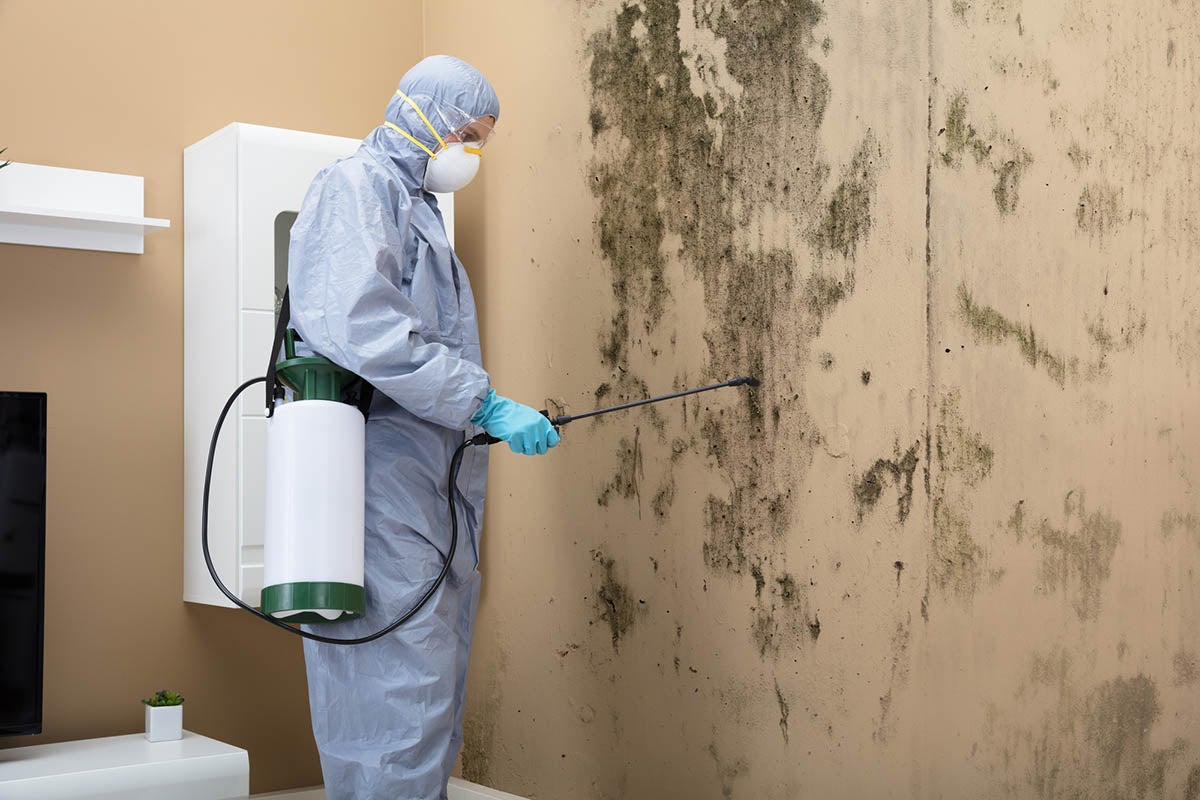Testing Air Quality After Mold Remediation
Testing Air Quality After Mold Remediation
Blog Article
Your Ultimate Guide to Article Mold And Mildew Remediation Techniques
Navigating the world of post-mold removal techniques is a precise procedure that requires focus to detail and an extensive understanding of the details involved. In the results of mold problem, knowing exactly how to successfully get rid of the mold and stop its reoccurrence is paramount for preserving a healthy indoor atmosphere. From choosing the best cleaning and sanitizing techniques to applying approaches for lasting mold and mildew avoidance, each action in the removal trip plays an important duty in guaranteeing a successful result. As we get started on this expedition of post-mold removal techniques, we will certainly discover the essential strategies and finest methods that can aid you restore your area to its pre-mold problem and protect it versus future mold and mildew hazards.
Understanding Post-Mold Remediation Process
After finishing the mold removal procedure, it is important to understand the post-mold removal techniques that are necessary to guarantee a effective and thorough cleanup. When the mold has been eliminated, the next step involves cleansing and sanitizing the affected areas to avoid any type of regrowth of mold.
Moreover, performing a final inspection post-remediation is crucial to make sure that all mold and mildew has been successfully gotten rid of. If the assessment reveals any lingering mold, added remediation may be required.
Effective Cleaning Up and Sanitizing Methods

Avoiding Future Mold And Mildew Development

Relevance of Appropriate Air Flow
Appropriate ventilation plays an important duty in preventing moisture accumulation, a vital consider mold growth within indoor atmospheres. Efficient ventilation systems help eliminate excess moisture from the air, reducing the possibilities of mold and mildew spores discovering the wetness they need to germinate and spread out. Without ample air flow, interior areas can end up being a reproduction ground for mold, bring about potential health and wellness threats and architectural damage.
By making certain correct air blood circulation, air flow systems can additionally aid in drying wet areas much more swiftly after water damages or flooding occurrences, additionally deterring mold and mildew development. read this article what to do after mold mold removal protocol remediation. Precede like bathrooms, attics, kitchen areas, and basements where wetness degrees have a tendency to be higher, mounting and maintaining effective air flow systems is essential in avoiding mold problems

Surveillance and Maintenance Tips
Provided the important function that appropriate air flow plays in avoiding mold development, it is crucial to establish efficient surveillance and upkeep suggestions to make sure the continued performance of air flow systems. Routine examinations of ventilation systems must be conducted to look for any kind of signs of obstructions, leaks, or malfunctions that could hamper correct air flow. Tracking humidity degrees within the building is likewise important, as high humidity can add to mold and mildew development. Mounting a hygrometer can assist track humidity levels and alert home owners to any type of spikes that may call for focus. Furthermore, making certain that air filters are frequently cleansed or changed is crucial for keeping the efficiency of the ventilation system. Executing a timetable for regular maintenance jobs, such as air duct cleansing and heating and cooling system examinations, can help stop problems before they intensify. By remaining aggressive and alert to the condition of air flow systems, building owners can successfully reduce the danger of mold and mildew regrowth and maintain a healthy and balanced interior setting.
Verdict
Finally, post-mold remediation strategies are essential for guaranteeing a tidy and safe environment. Understanding the procedure, applying reliable cleaning and disinfecting techniques, protecting against future mold and mildew development, preserving correct air flow, and routine monitoring are all essential action in the remediation process. By following these standards, you learn the facts here now can successfully eliminate mold and prevent its return, working or promoting a healthy and balanced living space for all passengers.
In the consequences of mold problem, understanding exactly how to effectively eliminate the mold and stop its reoccurrence is paramount for maintaining a healthy indoor environment. When the mold and mildew has been gotten rid of, the next step includes cleansing and decontaminating the influenced areas to prevent any kind of regrowth of mold and mildew - what to do after mold remediation. After getting rid of visible mold growth, it is critical to clean all surface areas in the afflicted location to eliminate any type of staying mold and mildew spores. To even more improve mold and mildew prevention procedures, it is necessary to resolve underlying issues that at first led to mold and mildew development.Given the critical role that proper air flow plays in protecting against mold development, it is critical to develop efficient tracking and upkeep tips to make certain the continued performance of air flow systems
Report this page